*EXCLUSIVE* Pte. J. H. Goodall 1st South Lancashires Captured German D-Day Beachhead (Omaha, Gold, Juno, Sword) Normandy Combat Map
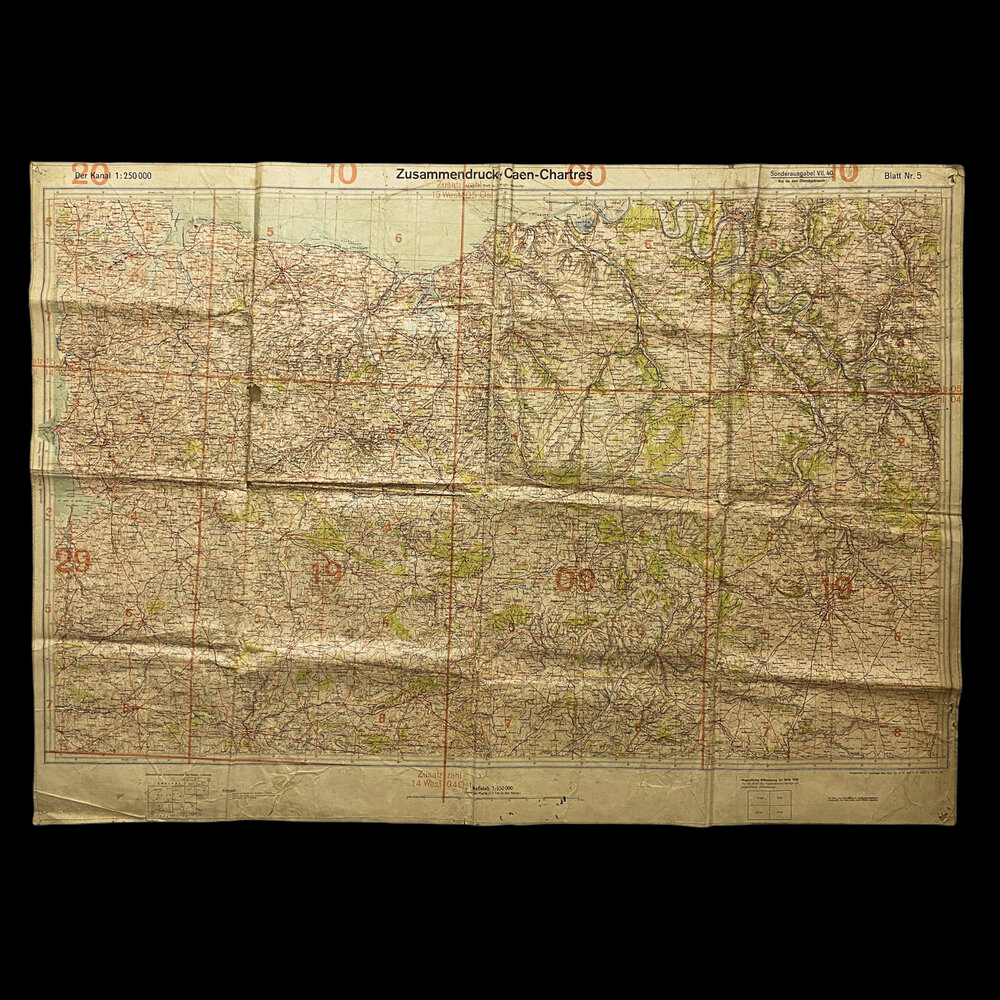


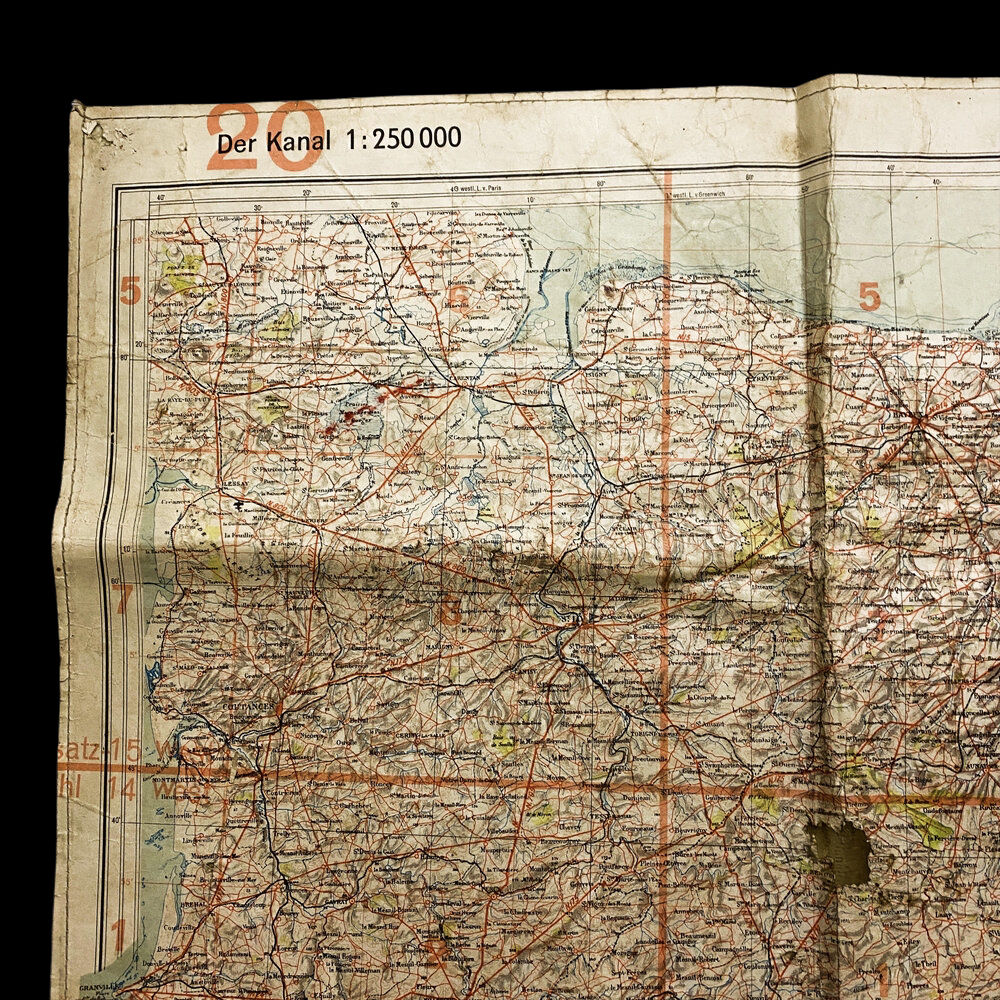
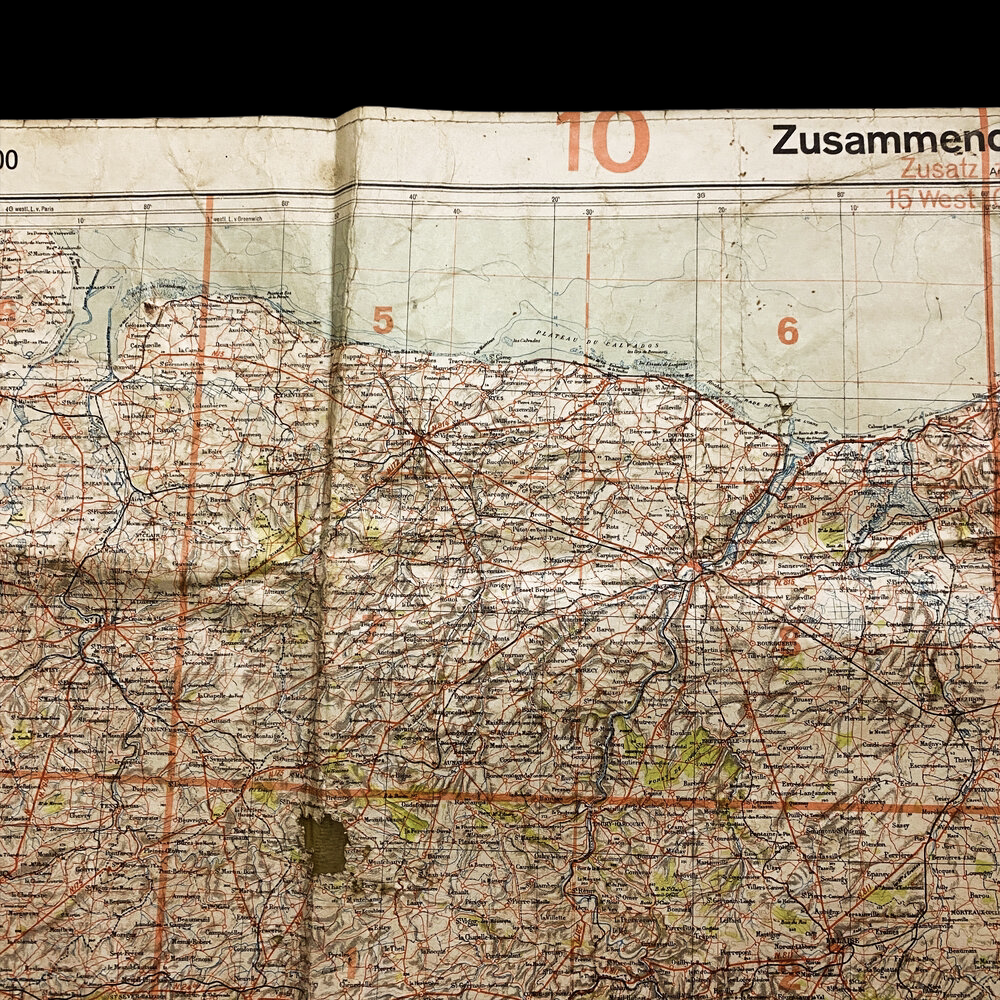
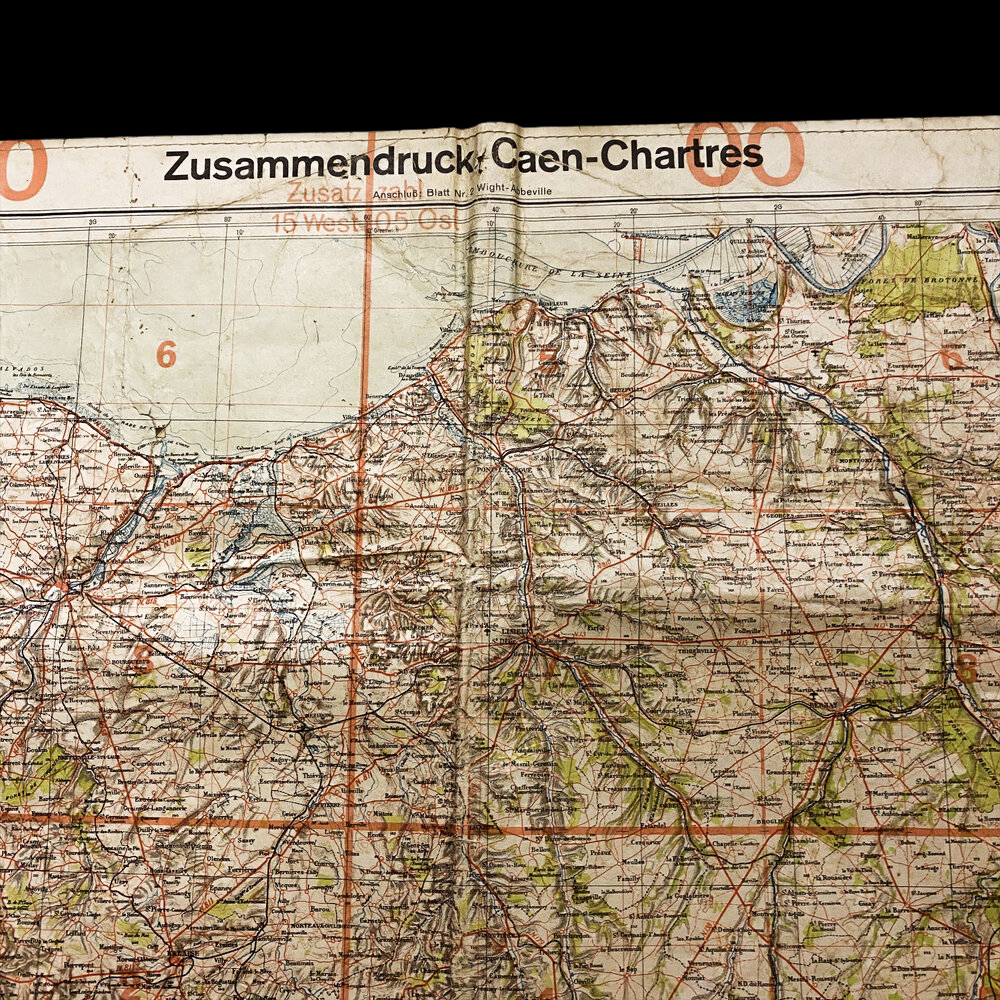

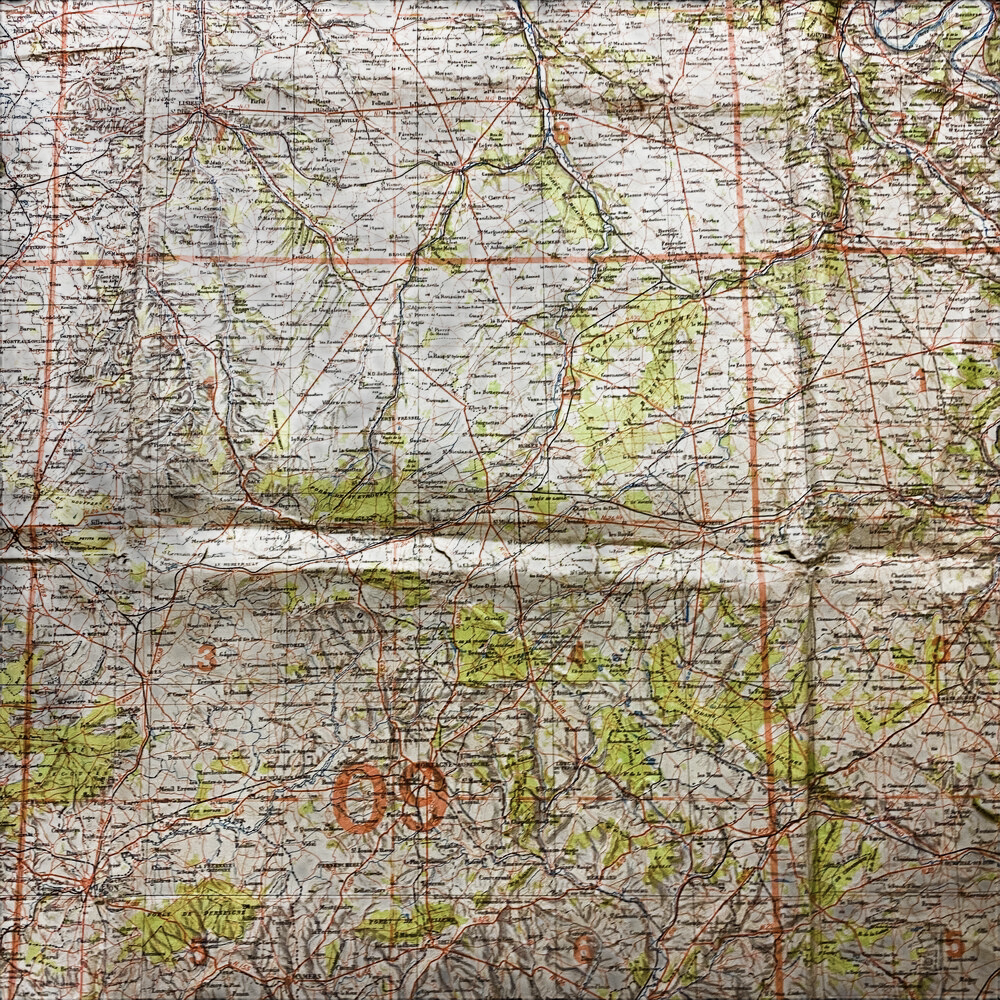

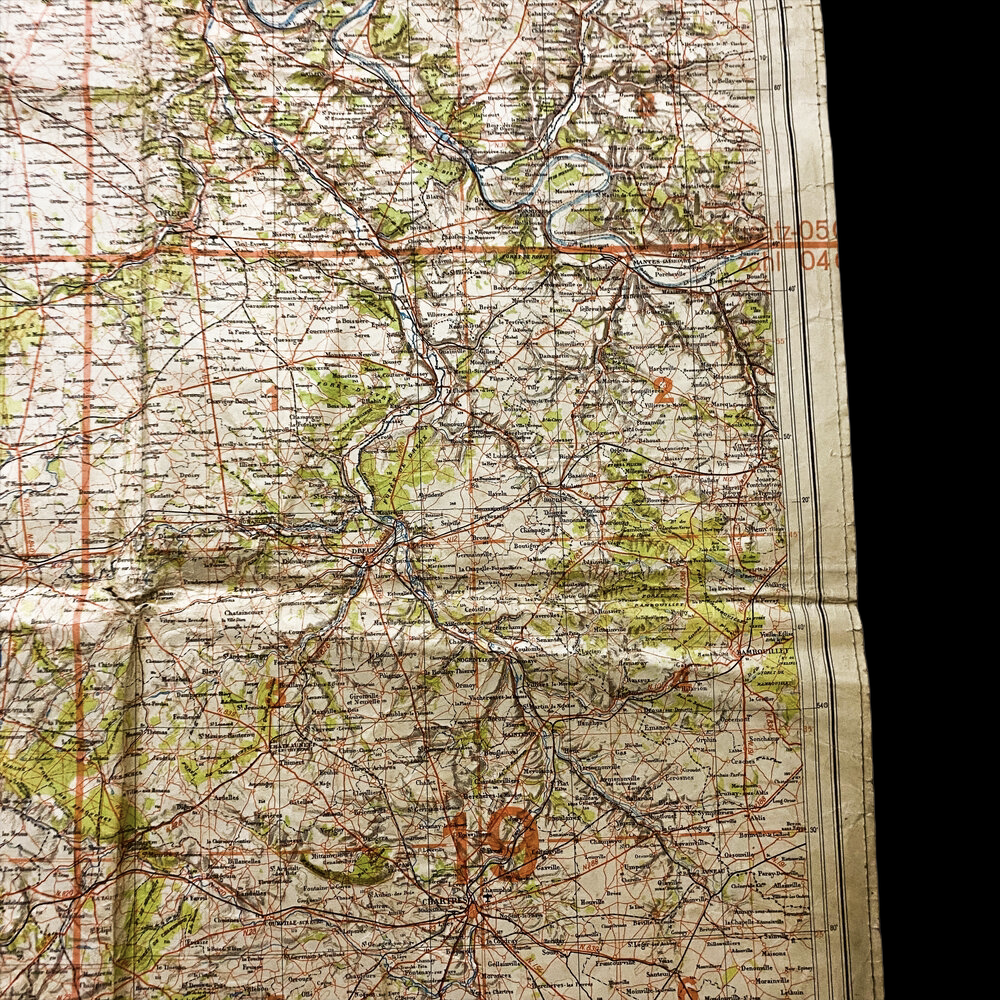
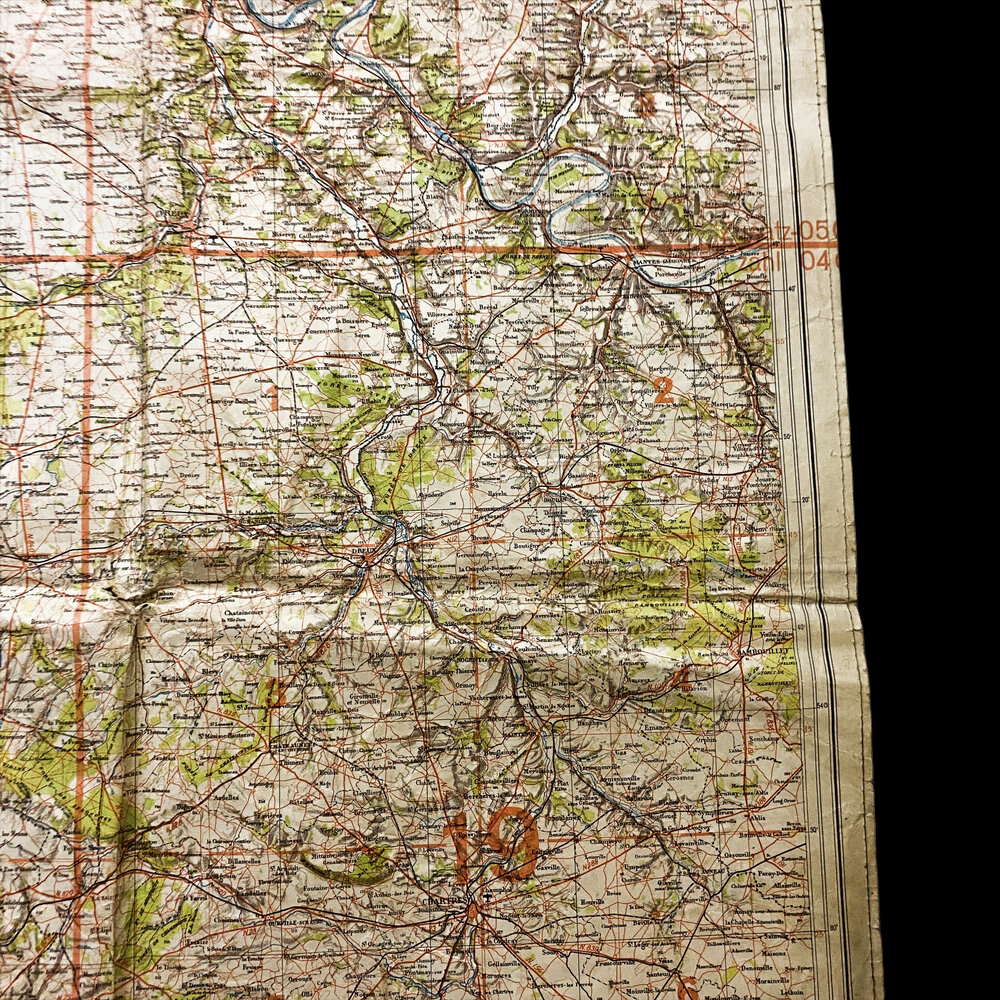


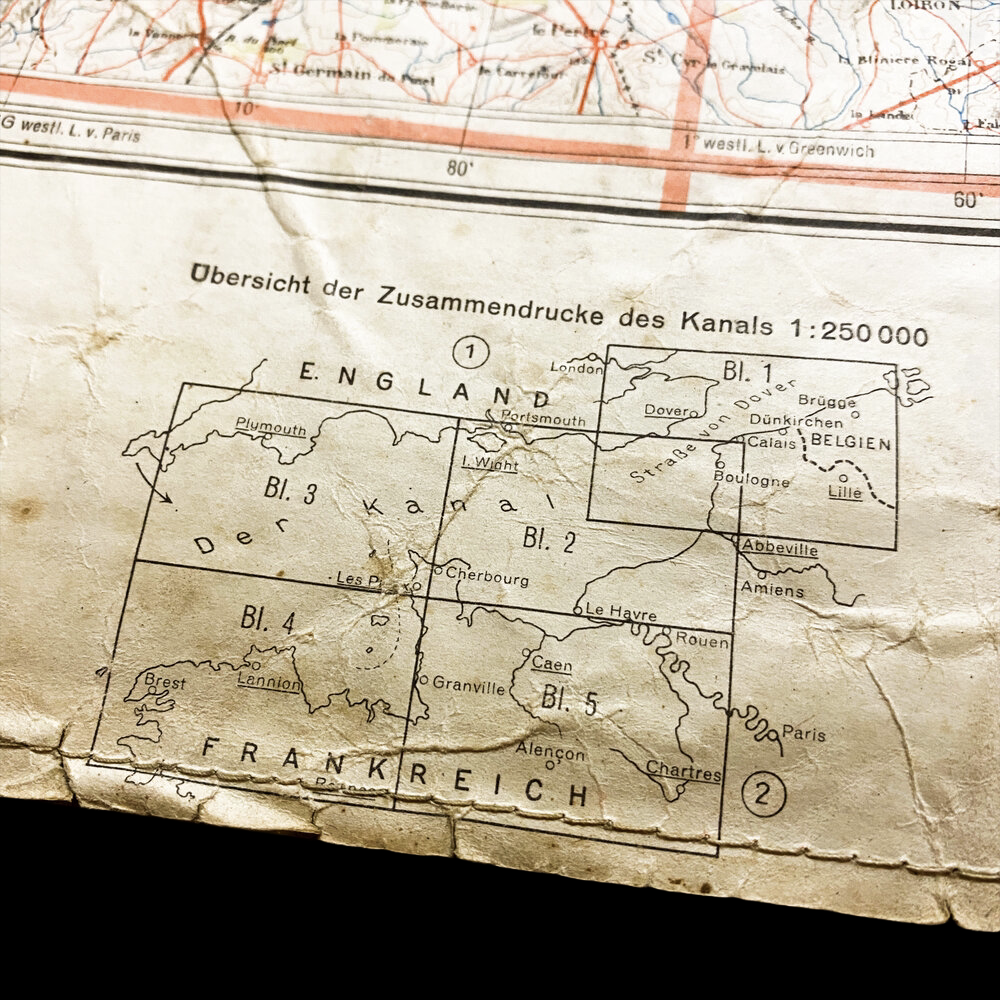
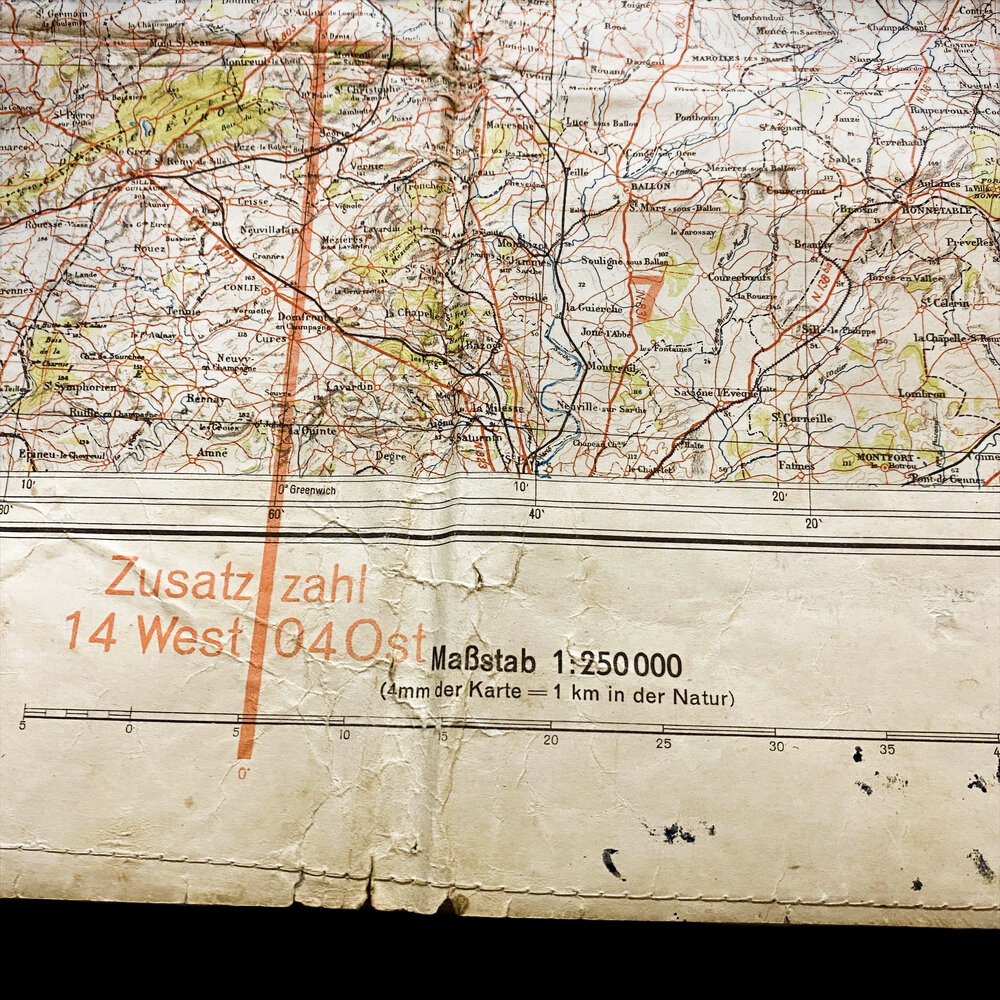
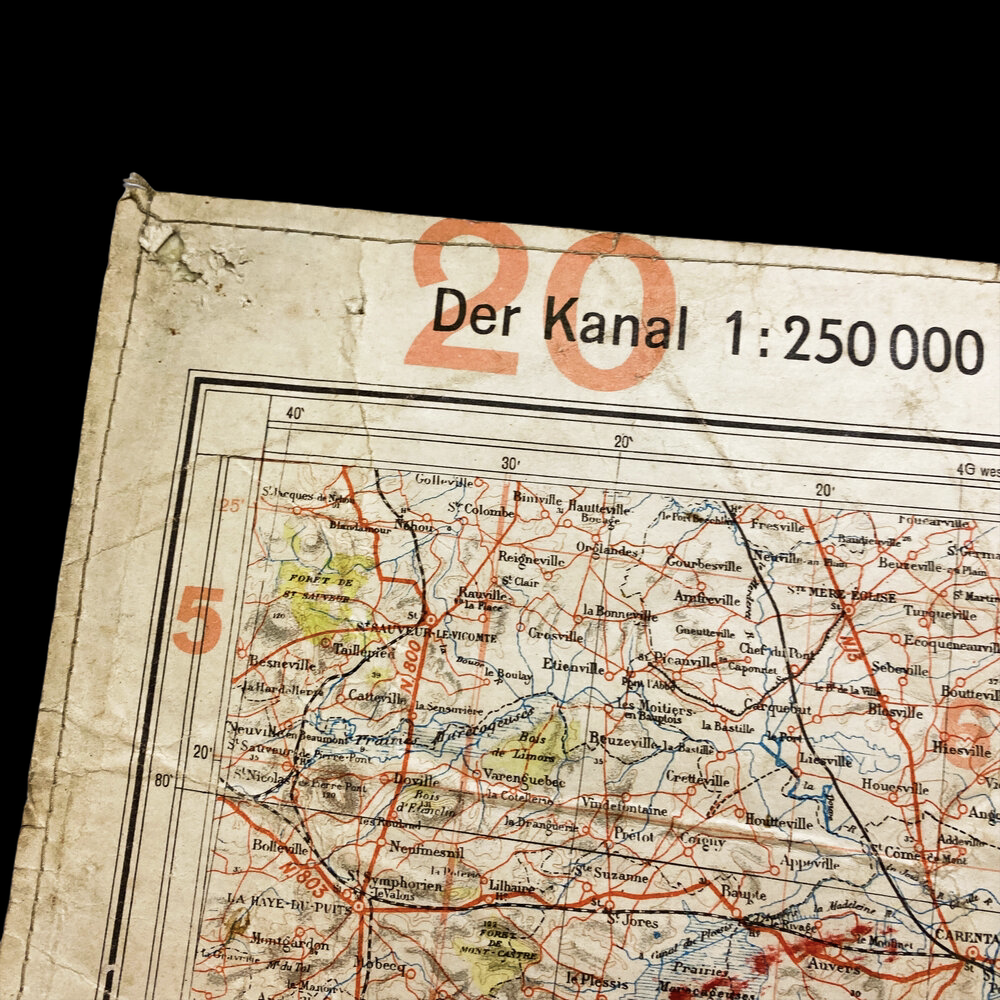

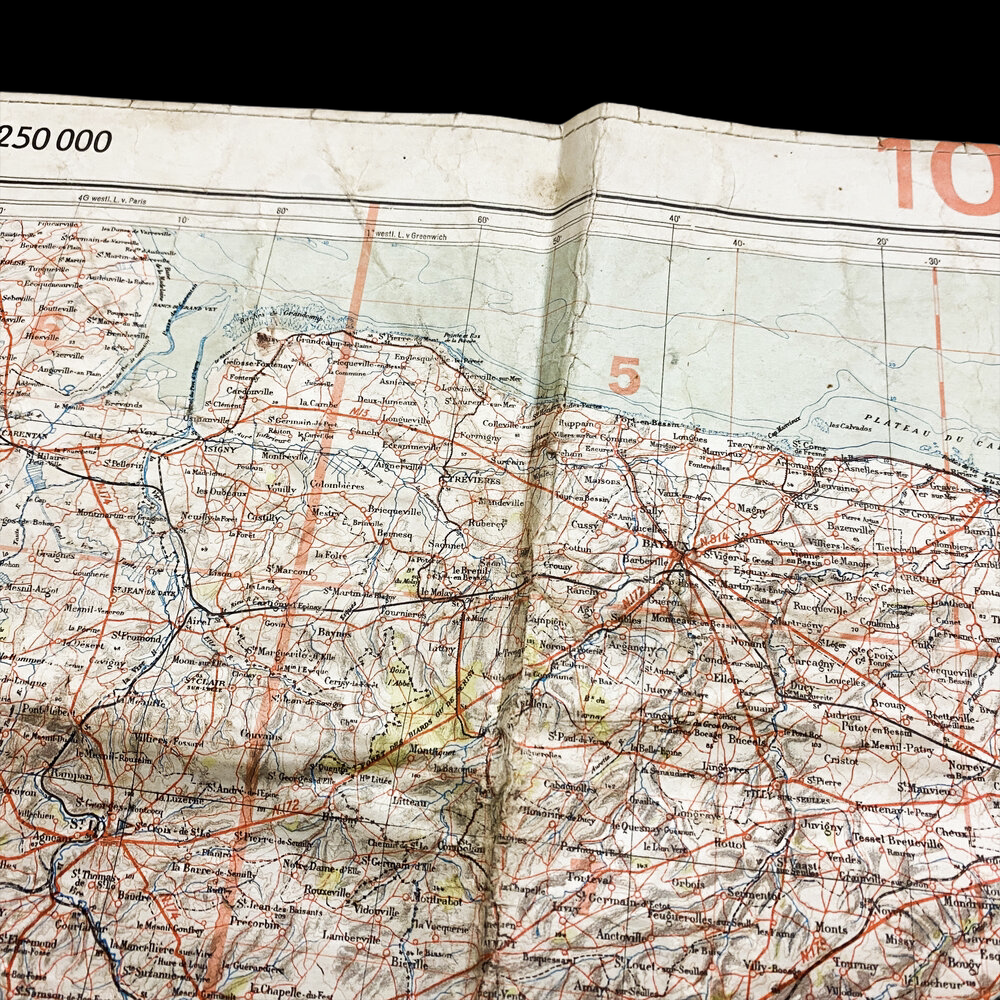


*EXCLUSIVE* Pte. J. H. Goodall 1st South Lancashires Captured German D-Day Beachhead (Omaha, Gold, Juno, Sword) Normandy Combat Map
Comes with C.O.A.
Museum grade WWII D-Day artifact captured by Pte. J. H. Goodall on the June 6th, 1944 as he the 1st South Lancashires were one of the two leading assault battalions of the 3rd Division. The Battalion landed on Queen White Beach at 7.20 a.m. This map was captured shortly after.
This extremely rare, one sided, D-Day captured Normandy beach head coast weather proofed 1940 dated German map titled ‘Zusammedruck- Caen - Chartres’ (Translated: Compression Map- Caen - Chartres) shows the initial Normandy region and initial landing beachheads landed on by the British and American forces on June 6th, 1944. The map sector Blatt Nr. 5 (Translated: Leaf Number 5) shows four of the five Allied amphibious assault beachheads of the American’s Omaha Beach stretching to the British and Canadian beachheads of Gold, Juno, and Sword.
This map was captured and brought back by Pte. J. H. Goodall who served in the amphibious D-Day landings with the 1st Battalion South Lancashire Regiment. The Regiment was expanded in World War II, to a total of 9 battalions. They served in North West Europe, Madagascar, India and Burma. On D-Day, 6 June 1944, the 1st Battalion was in the first wave to land on Sword Beach, Normandy, at the start of the invasion of Europe. On D Day, 6th June 1944, the 1st South Lancashires were one of the two leading assault battalions of the 3rd Division. The Battalion landed on Queen White Beach at 7.20 a.m. and, despite losing the Commanding Officer and well over one hundred other casualties, made good progress through the well-prepared German beach defences and pressed inland to capture Hermanville by 9 a.m. Over the next days the South Lancashires captured the villages of Plumetot, Cresserons and La Deliverande, and the enemy strongpoint known as ‘Trout’, and secured the famous Pegasus Bridge across the Orne. This map was captured by Pte. J. H. Goodall on their inward push inland after their initial assault on the beach.
When comparing and referencing other WWII German maps of the era, as well as examining the small pin holes located in all four corners of the map it is believed that this map was hung in a German fortification, gun fortress (pillbox), or German operational command post and used when moving troops and supplies from the beaches and throughout the Normandy region.
This would have been used corresponding with the other 5 German maps labeled: Blatt Nr. 1, Blatt Nr. 2, Blatt Nr. 3, Blatt Nr. 4, and Blatt Nr. 5. These map sections and other sectors can been seen in the bottom left section of the map.
“D-Day by Chris Collingwood June 6th, 1944 allied troops land in Normandy, here assault troops of the South Lancashire Regiment of the British 3rd Infantry Division storm ashore at sword beach. Second Lieutenant G. G. Coury Assisting Men Digging A Communication Trench Under Intense Fire. During an advance, Second Lieutenant Gabriel George Coury, of the South Lancashire Regiment, was in command of two platoons, which had been ordered to dig a communication trench, and his fine example kept up the spirits of his men, who completed the task under intense fire.
Later, after his battalion had suffered severe casualties and the commanding officer had been wounded, he went out in front of the advanced position in broad daylight and brought him back over ground swept by machine-gun fire. He also assisted in rallying the attacking troops and in leading them forward.
He has been awarded the V.C. for his most conspicuous bravery. Corporal Windell Breaking-Up The Enemies Attack By The Fire Of His Machine-Gun From The Roof Of A house Near Neuve Chapelle. With hastening with an officer and a private to the roof of a house near Neuve Chapelle to recover a Maxim gun, Corporal John William Windell of the 2nd Battalion South Lancashire Regiment, saw from the attic some of the enemy digging themselves in, while a considerable number were advancing to occupy an abandoned British trench. He at once trained the gun on the advancing Germans, but very soon bullets began to splash against the roof, which sheltered him.
The firing came from a machine gun in a house five hundred yards away, and on turning his gun on it, Corporal Windell actually silenced his opponent. He again trained his gun on the advancing infantry, who fell back in disorder, but he had soon to retreat before heavy shellfire. He eventually recovered the gun and was rewarded with the D.C.M. for his gallantry and ability.”
The NORTH WEST EUROPE 1944-1945 (1st Battalion South Lancashire Regiment):
NORMANDY 1944
Normandy Landing. On D Day, 6th June 1944, the 1st South Lancashires were one of the two leading assault battalions of the 3rd Division. The Battalion landed on Queen White Beach at 7.20 a.m. and, despite losing the Commanding Officer and well over one hundred other casualties, made good progress through the well-prepared German beach defences and pressed inland to capture Hermanville by 9 a.m. Over the next days the South Lancashires captured the villages of Plumetot, Cresserons and La Deliverande, and the enemy strongpoint known as ‘Trout’, and secured the famous Pegasus Bridge across the Orne.
Caen. The 1st South Lancashires were then heavily engaged in the initial British thrust towards Caen, with particularly heavy fighting and many casualties on 22nd-23rd and 26th June against strong enemy positions around Le Londel. By the end of June the 1st and 5th East Lancashires were also in Normandy, with the 53rd and 59th Divisions respectively. On 8th July the 5th East Lancashires took part in a renewed advance on Caen, during which their B Company fought an action at St Contest.
The Bocage. Both East Lancashire battalions then deployed into the close bocage country west of Caen. While the 1st Battalion held a succession of defensive positions in an exposed salient, at Cheux, Grainville and Bougy, the 5th Battalion were involved in offensive action 2-3 miles further west. On 16th July (‘Black Sunday’) the 5th East Lancashires suffered some two hundred casualties in an attack at Fontenay-le-Pesnil. On 29th July the same Battalion made another costly attack, though this time with more success, and by 8th August they had advanced to the River Orne bridgehead at Grimbosq, where the 1st Battalion also crossed. On 13th August, due to an acute shortage of infantry battle casualty replacements, the 59th Division, including 5th East Lancashires, was disbanded.
Operation Goodwood. The 1st South Lancashires were next engaged on the left flank of Operation Goodwood, the major British offensive on the Bourguebus Ridge designed to draw in the German reserves prior to the Allied break-out from the Normandy beach-head. The Battalion was in action 17th-27th July around the villages of Touffreville and Sannerville and the infamous ‘Black Orchard’, where they lost their third Commanding Officer since D Day, earning the battle honour Troarn.
Falaise. The break-out was now under way and a large part of the German army in Normandy was trapped in a pocket west of Falaise On 11th August the 1st South Lancashires led an advance into this pocket down the Vire-Tinchebray road, on the extreme left of the British front. Meanwhile the 1st East Lancashires, advancing south from the Orne against the neck of the pocket, captured the little town of Bois Halbout in a spirited quick attack on 12th August, then exploited to just west of Falaise. On 19th August, when the encirclement of German forces in the Falaise pocket was completed, the battle for Normandy was effectively over.